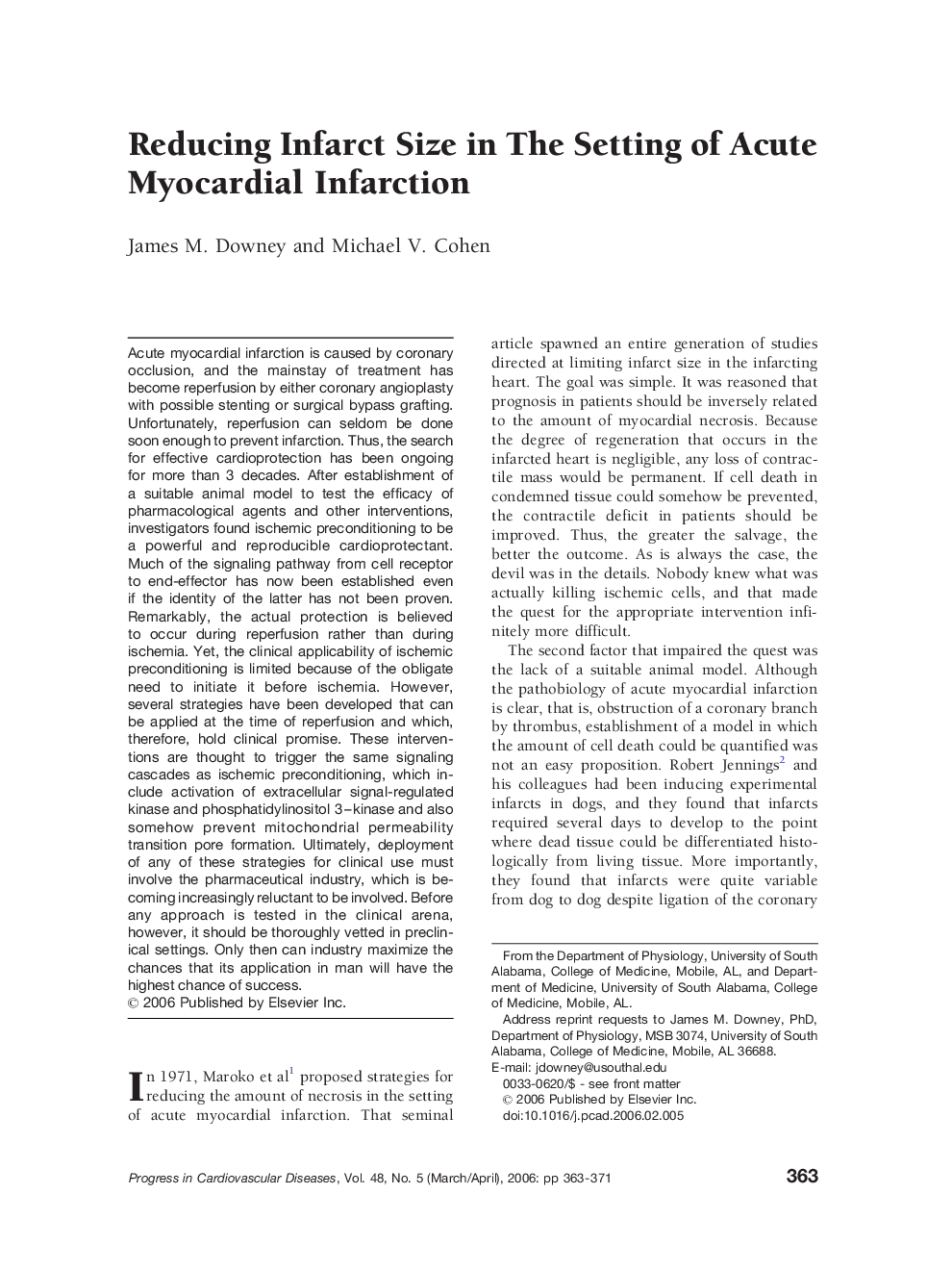| Article ID | Journal | Published Year | Pages | File Type |
|---|---|---|---|---|
| 3007065 | Progress in Cardiovascular Diseases | 2006 | 9 Pages |
Acute myocardial infarction is caused by coronary occlusion, and the mainstay of treatment has become reperfusion by either coronary angioplasty with possible stenting or surgical bypass grafting. Unfortunately, reperfusion can seldom be done soon enough to prevent infarction. Thus, the search for effective cardioprotection has been ongoing for more than 3 decades. After establishment of a suitable animal model to test the efficacy of pharmacological agents and other interventions, investigators found ischemic preconditioning to be a powerful and reproducible cardioprotectant. Much of the signaling pathway from cell receptor to end-effector has now been established even if the identity of the latter has not been proven. Remarkably, the actual protection is believed to occur during reperfusion rather than during ischemia. Yet, the clinical applicability of ischemic preconditioning is limited because of the obligate need to initiate it before ischemia. However, several strategies have been developed that can be applied at the time of reperfusion and which, therefore, hold clinical promise. These interventions are thought to trigger the same signaling cascades as ischemic preconditioning, which include activation of extracellular signal-regulated kinase and phosphatidylinositol 3–kinase and also somehow prevent mitochondrial permeability transition pore formation. Ultimately, deployment of any of these strategies for clinical use must involve the pharmaceutical industry, which is becoming increasingly reluctant to be involved. Before any approach is tested in the clinical arena, however, it should be thoroughly vetted in preclinical settings. Only then can industry maximize the chances that its application in man will have the highest chance of success.
